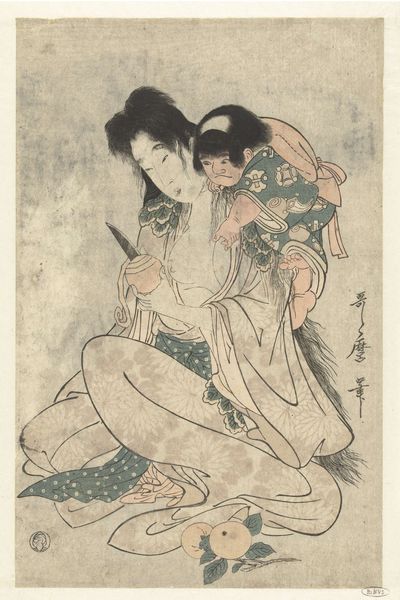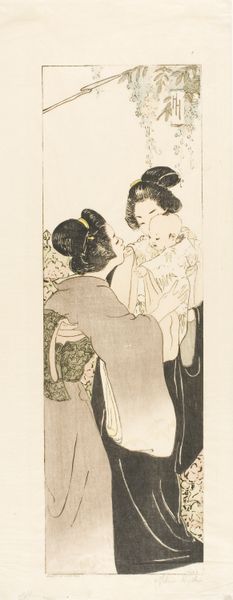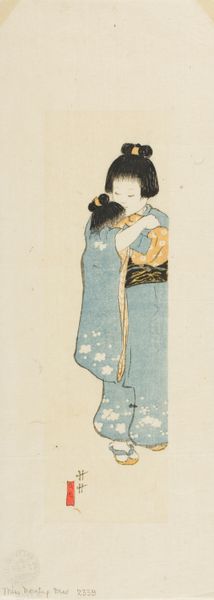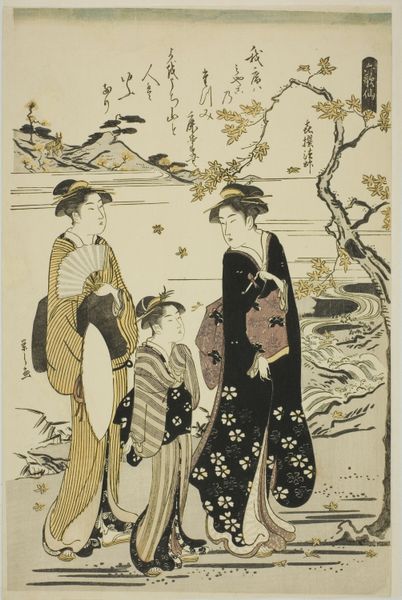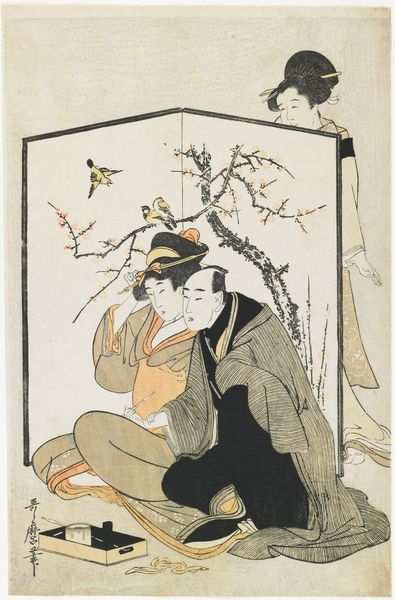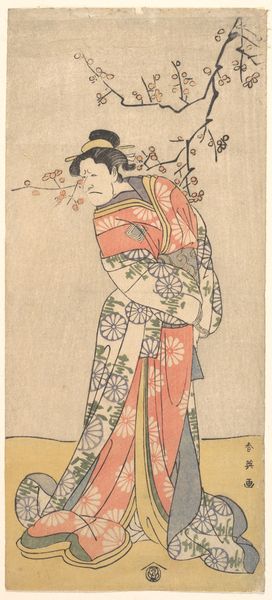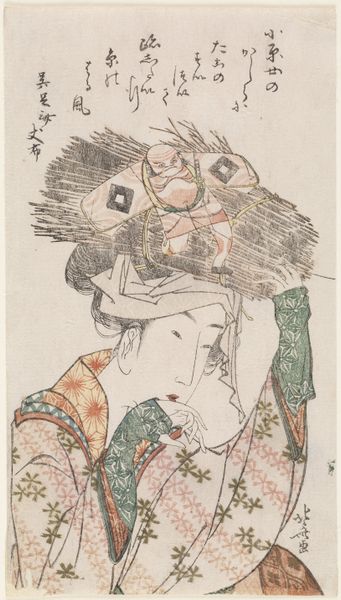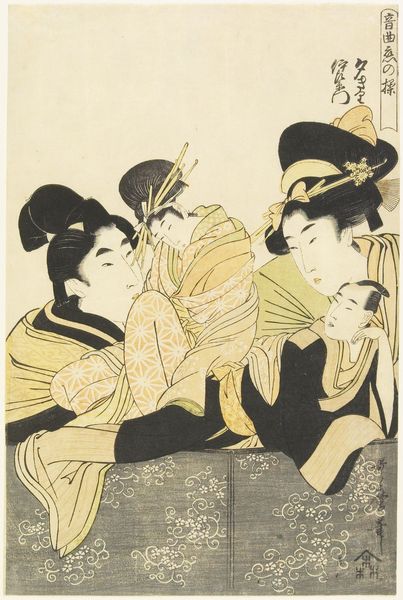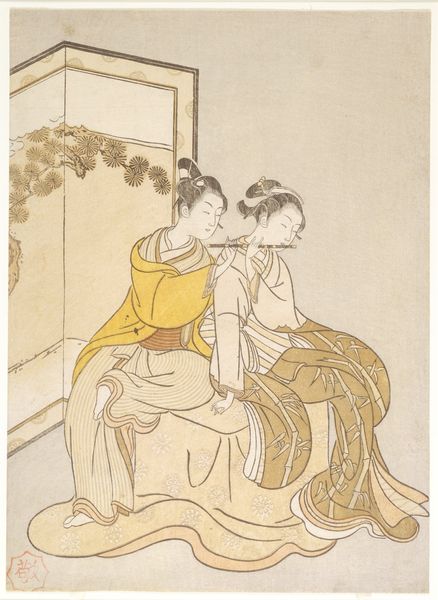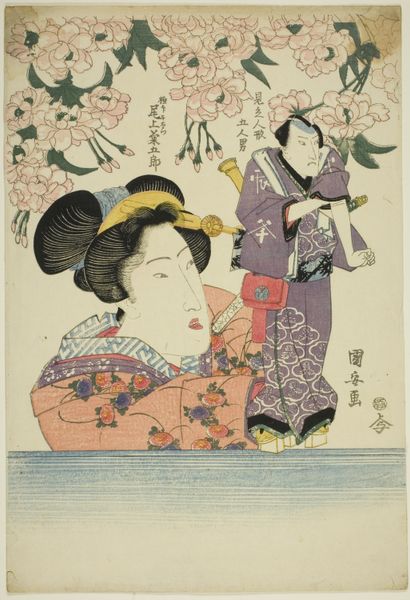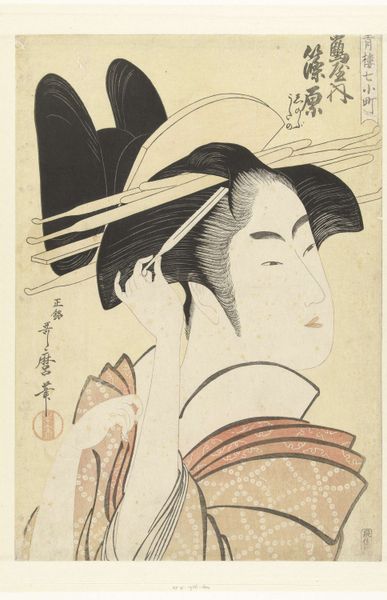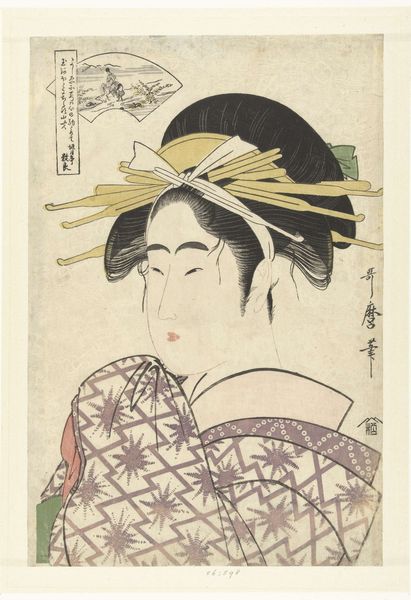
Dimensions: 7 3/8 x 5 1/8 in. (18.73 x 13.02 cm) (plate)
Copyright: No Copyright - United States
Curator: Just ahead, we have Louis Legrand's "Petite Mère," dating back to the 19th century, currently held at the Minneapolis Institute of Art. It's an etching. Editor: A sweet depiction of a tender moment. There's something vulnerable and raw about its intimacy, enhanced by the soft colors. Curator: As an etching, we need to consider the labour involved—the preparation of the plate, the acid bath, and the wiping of the ink, each step influenced by workshop practices and traditions. It suggests an interesting democratisation of image making during the fin de siecle, no? Editor: Certainly, but what strikes me is the asymmetrical composition; the figure isn't rigidly placed. Instead, Legrand emphasizes a sense of captured, fleeting intimacy through carefully controlled lines. And the strategic use of color, focused on their faces and fabrics draws the eye where he wants it. Curator: Indeed. Consider, also, how the materials would have been accessed. An etching requires specific papers, inks and access to a printing press—aspects of production impacting not just the final image but its dissemination amongst bourgeois consumer circles. The commercial context shaped Legrand’s art as much as his aesthetic choices. Editor: While the economic conditions inform the piece, I believe Legrand's success here lies in conveying emotional truth, using specific stylistic conventions from Impressionism like loose sketching. Look how he captured an emotive, vulnerable exchange by depicting their connection to each other through color and tone. Curator: I think what matters here is the system. These genre scenes sold very well precisely because the processes—the etching process, and associated labour involved to churn out prints—enabled Legrand to distribute the finished product to a large buying audience eager for such middle-class depictions. Editor: I still see that beyond these socioeconomic factors, that Legrand uses the medium for highly sensitive storytelling; those colors evoke the home, the embrace creates connection, all of which, while material realities frame this as an everyday scene for purchase, is meant to offer genuine heartfelt sentiments, reflecting the eternal dynamics within families. Curator: A balance, then. Materials enable intimate reflections, shaping our very notions of "heartfelt." Editor: Yes, we each see parts contributing to this whole intimate artwork.
Comments
No comments
Be the first to comment and join the conversation on the ultimate creative platform.
